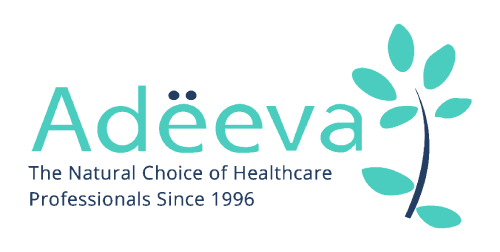Medical Tests of Great Importance
it is highly recommended that you have the following blood tests and other evaluations performed by your health practitioner at appropriate intervals, to help establish your wellness/anti-aging and disease risk status. Compare your results to the optimal range scores provided on the Interpretation of Blood Tests Table and Other Medical Investigations page of this website to see how well you are doing with respect to these important parameters. Your physician may wish to include additional tests based upon your personal circumstances, but the blood tests and other evaluations listed below provide a meaningful starting point from which to evaluate your overall health status and health-risk profile.
Note that all blood tests should be performed after a 12-14 hour fast (water only).
We suggest that you take this form to your doctor upon your next check-up, and request that the appropriate tests be performed.
Click here to download and save the form to your computer.
Other Tests of Importance:
Urinalysis: this is a standard assessment of urine to screen for a variety of health and disease indicators.
Blood Pressure: high blood pressure is a critical risk factor for heart disease and stroke (along with high cholesterol and smoking). Your blood pressure should remain below 140/90. The upper reading is a measure of the force of contraction of the heart muscle (measured in mm of mercury pressure), and the second reading indicates the pressure resistance to blood flow created by the muscle tension of the artery wall (arterioles).
ECG/EKG: the electrocardiogram provides details about the heart’s performance. Abnormal electrocardiogram readings can indicate insufficient blood flow to the heart muscle, impaired conduction of nerve impulses throughout the heart, or asynchronous contraction patterns called fibrillations.
PSA (Prostate Specific Antigen): this is a blood test recommended for all men over 50 years of age, at regular intervals, to screen for the presence of prostate cancer. A reading higher than 0.4 ug/L (4 ng/mL) is cause for concern. It may also indicate prostate inflammation. Note that a rapid rise in PSA within the normal range also requires assessment for the presence of prostate cancer, according to some experts. Picking up prostate cancer in the early stages enables doctors to prevent it from spreading outside the prostate and becoming a lethal disease. Presently, one in eight men in most developed countries develop prostate cancer and it is the second leading cause of cancer death in men after lung cancer.
Pap Smear and Internal Exam: this is common testing used routinely to screen for cervical cancer and cervical dysplasia (precancerous condition) in women, as well as to screen for other uterine abnormalities.
Colonoscopy/ Sigmoidoscopy: these procedures are recommended for individuals over fifty years of age to screen for early detection of colon cancer. Colon cancer affects one in 16 adults over their lifetime in most developed countries. As such, these procedures can catch it early, before it spreads and becomes a lethal disease.
Bone Mineral Density: This test is used to screen for osteoporosis, which is estimated to affect one in four women and one in eight men by age 50. The consequences of hip fractures from osteoporosis result in more deaths each year than the combined mortality rate for breast and ovarian cancer, in women. Osteoporosis problems are on the increase as society age, therefore, individuals answering yes to any of the following risk-related questions should be screened for osteoporosis by use of a bone mineral density test:
- Are you a woman over the age of 50?
- Are you a woman, who entered into early menopause (40-45), or premature menopause (before 40)?
- Are you a woman who has had both ovaries surgically removed before normal menopause (45-55)?
- Are you a woman under 45 years of age who routinely misses menstrual cycles or has greatly diminished menstrual flow due to estrogen and/or progesterone deficiency?
- Have you ever suffered from anorexia nervosa or bulimia?
- Are you a woman who at some time in your life exercised excessively or competitively to the point where your body fat was very low?
- Have you undergone treatment with oral glucocorticosteroid (prednisone, cortisone etc.) drugs for more than 3 months at any time in your life?
- Have you ever been diagnosed with hyperparathyroidism?
- If you are a woman, did your mother or a sister develop osteoporosis?
- Are you a man over 65 years of age?
- Are you older than 45 and your doctor has told you that you are underweight?
- In general, do you have poor muscular development and strength?
- Have you ever taken anticonvulsant medication for more than 2 years?
Tests Not Paid For By Insurance Plans
Note that certain tests mentioned above are not commonly covered by government or private health insurance plans. This is most often the case for homocysteine, vitamin E, vitamin C, selenium, vitamin D, PSA, fructosamine and IGF-1, vitamin B12, Folic Acid, Coenzyme Q10, Holotranscobalamin II..Nevertheless, it is worth the small investment in your health to know your blood levels of these important health indicators.
References:
- Burtis CA, Ashwood ER (eds): Tietz Textbook of Clinical Chemistry. Philadelphia, WB Saunders, 1994.
- Conn RB (ed): Current Diagnosis, 9th ed. Philadelphia, WB Saunders, 1997.
- Hardman JG, Limbird LE, Molinoff PB, Ruddon RW (eds): Goodman and Gilman’s The Pharmacological Basis of Therapeutics, 9th ed. New York, McGraw-Hill, 1995.
- Henry JB (ed): Clinical Diagnosis and Management by Laboratory Methods, 19th ed. Philadelphia, WB Saunders, 1996.
- Tietz NW (ed): Clinical Guide to Laboratory Tests, 3rd ed. Philadelphia, WB Saunders, 1995.
- Gey KF, Moser UK, Jordan P et al. Increased risk of cardiovascular disease at suboptimal plasma concentrations of essential antioxidants: and epidemiological update with special attention to carotene and vitamin C. Am J Clin Nutr. 1993; 57(5 Suppl):787S-797S
- Academy of Anti-Aging Research (Fellowship Program) Continuing Medical Education Series (www.a3r.org)
- Dr. Anderson’s Antioxidant Antiaging Health Program (Carroll & Graf Publishers) 1996: 47-48
- Russo MW et al. Plasma selenium levels and the risk of colorectal adenomas; Nutrition and Cancer 1997; 28(2):125-12
- Current Medical Diagnosis & Treatment (edit. Tierney LM. Jr., Mc Phee SJ and Papadakis MA). 1994: 1347-1352 (Appendix: Laboratory Reference Ranges). Appleton & Lange
- Clinical Laboratory Medicine (4th edition) Ravel R. 1984. Year Book Medical Publishers, Inc
- The Life Extension Revolution. Miller PL. 2005: 181-199. Bantam Books
- Veith R. Vitamin D supplementation, 25-hydroxy Vitamin D concentrations and safety. Am J Clin Nutr 1999; 69(5):842-56
- Klatz R. Grow young with HGH. Harper Perennial, 1998
- Plant AS and Tisman G: Frequency of combined deficiencies of vitamin D and holocobalamin in cancer patients. Nutr and Cancer; 56,2: 143-8. 2006
- Coenzyme Q10 in the treatment of hypertension: a meta-analysis of the clinical trials,” Rosenfeldt FL, Haas SJ, et al, Journal of Human Hypertension, 2007; 21(4): 297-306.
- Folkers K, Yamamura Y, editors. Biomedical and clinical aspects of Coenzyme Q. Vol 4. Amsterdam: Elsevier Science Publ; 1984.
- Tauchert M. Efficacy and safety of crataegus extract WS 1442 in comparison with placebo in patients with chronic stable New York heart Association class-III heart failure. Am Heart J 2002;143(5):910-5
- Tauchert M, Siegel G, Schulz V. Hawthorn extract as plant medication for the heart; a new evaluation of its therapeutic effectiveness [translated from German]. MMW Munch Med Wochenschr. 1994;136(suppl 1):S3-S5
- Shults, (M.D.) C.W. et al. Effects of Coenzyme Q10 in Early Parkinson Disease. Archives of Neurology; Vol.59, No.10: 1541-1550. October 2002.

